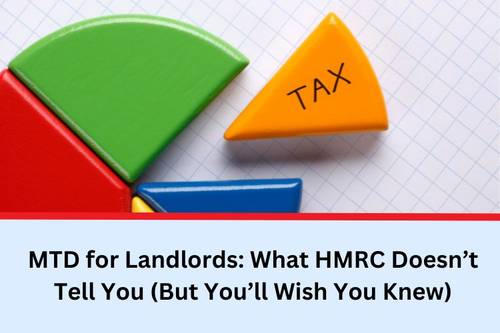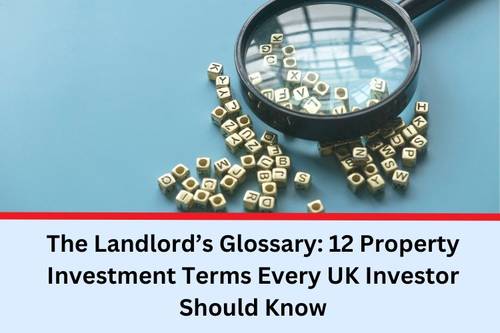Not every loss in property is dramatic. It’s not always a missed payment, a broken boiler, or a nightmare tenant. More often, it’s the quieter stuff, like overlooked decisions, passive habits, the “I’ll deal with it later” moments.
These hidden losses can cost hundreds (sometimes thousands) each year, especially if you’re managing multiple properties. So let’s break down some of the real ways landlords lose money - the ones nobody talks about at networking events, and what to do instead.
1. Not Reviewing Mortgage Rates (Even While Fixed)
Landlords are usually on top of mortgage renewals once the fix ends. But here's the thing: you can sometimes switch early. And with rates shifting rapidly, that flexibility can be worth hundreds a year.
- Some lenders let you switch products with minimal or no fees
- Others offer incentives to stay with them, even mid-term
- Small drops (say, 0.5%) can make a big dent in monthly costs
Add a recurring note every 6–12 months to check current mortgage deals. Speak to a broker or check with your lender directly, they’ll usually tell you what’s available without triggering a change. Want to stay organised? Tools like PaTMa help you track mortgage details across all properties.
2. Being Too Generous with Long-Term Tenants
This one’s controversial, and we get it. You’ve had a great tenant for years. They’re tidy, they pay on time, they’ve never caused a fuss. But if you haven’t reviewed their rent in 2-3 years, there’s a good chance they’re now under market, by a lot.
Even £50 under market value = £600 a year. Multiply that by a few properties and you're looking at thousands.
Do a light rent review annually. Use Rightmove, Zoopla, or a free tool like PaTMa’s market comparables to check current rental trends. If a rise is justified, communicate clearly and with plenty of notice. Often, tenants understand, especially if you’ve been reasonable for years.
3. Holding Out for the “Perfect Tenant”
Here’s a trap many landlords fall into: Viewings go well, but the applicant isn’t quite right. You wait for a better match. A few more weeks pass, still no better option. The void period drags on.
Meanwhile, you’re paying:
- Council tax
- Insurance
- Utilities
- And losing rent every single day
Set a “void limit.” Maybe it’s 21 days, maybe it’s 30. But once that mark hits, it’s time to reassess your rent level or tenant criteria. Also, speed up your tenant onboarding with a checklist. That helps avoid unnecessary delays between move-outs and move-ins. If you’d prefer a digital option, PaTMa includes a step-by-step tenant onboarding checklist (including compliance).
4. Letting Tenancies Drift Past Their Fixed Term
It’s easy to leave things rolling. The tenant’s settled, the rent’s arriving, everything feels fine. But once a tenancy lapses into a periodic (month-to-month) agreement, you quietly lose some control.
- You can’t increase rent as flexibly
- You risk the tenant moving out with minimal notice
- You miss the chance to update terms, especially for new compliance rules
Make it part of your routine to review each tenancy 2–3 months before it ends. That gives you time to either renew on fresh terms or prepare for a change. You can do this with a spreadsheet or calendar reminders. Or use a landlord tool like PaTMa, which sends automatic alerts when key tenancy dates are approaching.
5. Over-Refurbishing for the Market
We all want nice properties. But it’s easy to get carried away. High-end kitchens, brushed gold taps, designer tiling, these things don’t always translate into higher rent or resale value.
In fact, most tenants just want:
- Clean, neutral spaces
- Durable finishes
- Functional kitchens and bathrooms
Before you start a refurb, ask yourself:
- Will this increase the monthly rent?
- Will it improve energy efficiency?
- Will it boost the property’s resale value?
If not, think twice. Better yet, run the numbers. Use spreadsheets or ROI calculators to forecast your returns before the builders turn up. PaTMa includes one built into its Deal Analyser, but pen and paper works too.
6. Compliance Mistakes That Seem Small (But Aren’t)
One expired gas cert. One missed How to Rent guide. One unprotected deposit.
None of these feel like a big deal, until you face a fine or realise you can’t serve notice properly. Compliance issues often don’t hurt until they really hurt.
Use a checklist system. One list per tenancy, one per property. Make sure you tick off the legal requirements every time you start (or renew) a tenancy. You could build this yourself using Google Sheets or Notion. Or use a system like PaTMa, which has built-in compliance checklists linked to each tenant and automatic reminders for things like EPCs and gas certs. It’s one less thing to worry about, and it keeps a clear paper trail.
Landlords rarely lose money all at once. It’s the slow leaks, the 2-month voids, the undercharged rents, the overspent upgrades, that add up to thousands over time. But most of these are fixable with a few good habits and simple systems.
You don’t need to overhaul everything. Just pick one or two of these leaks to patch first. Small changes lead to longer-term gains.
If you want to streamline the behind-the-scenes bits like compliance, rent tracking, reminders, market analysis so you don’t miss a beat, try PaTMa for free and explore what simple, structured landlord software can do for you.




